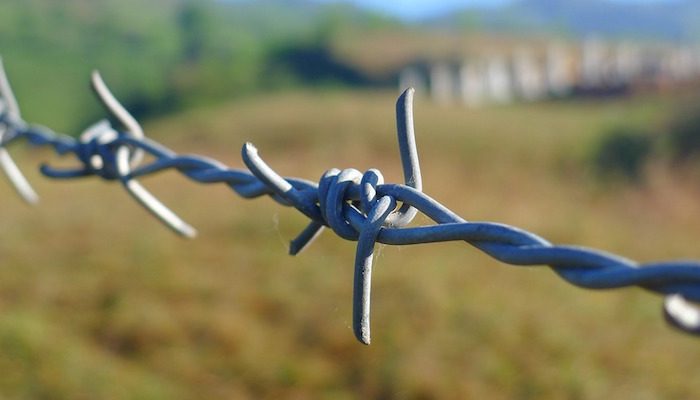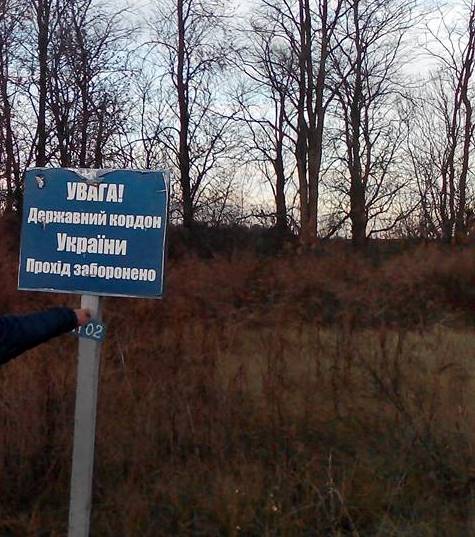
This is an excerpt from Ukraine’s Euromaidan: Broadcasting through Information Wars with Hromadske Radio by Marta Dyczok
Available now on Amazon (UK, USA, Ca, Ger, Fra), in all good book stores, and via a free PDF download. Find out more about E-IR’s range of open access books here
I was at the Ukrainian-Russian border recently. Just outside the Volfine village in the Sumy oblast. It was a field. For a while I couldn’t figure out where the border was. Our driver didn’t really want to take us there, because the road was well off the main highway and full of potholes. He didn’t want to damage his car.
He kept saying, ‘the border is just over there,” and pointing out the window.
“Where?” we asked. But he just kept repeating the same phrase and pointing across the field.
Eventually we asked him to stop and decided to walk.
“Do you have good walking shoes?” Antoine asked.
“Yes, of course, let’s go!” I answered. And we set off.
Antoine and I were Canadian election observers. We had arrived in Ukraine to monitor the October early parliamentary election, and deployed to the Sumy oblast. As luck would have it, the areas we were assigned to cover borders with Russia. A number of polling stations are located in villages along the border. So we went to visit them to see how election preparations were going. While in Pavlivka, we asked the head of the village election commission how close we were to the border with Russia.
“About 3 kilometers” answered the smiling, heavy-set, woman. “The next village over is partly in Russia”, she added. When we asked to explain, she said that the way the borders were drawn, parts of people’s gardens had ended up in the Russian Federation. So they had special documents to do their gardening, to be able to walk across their gardens.
“Can we go?” I asked eagerly.
“Oh no, you would need a visa,” she replied calmly.
Intrigued, we decided to investigate. To see what the Ukrainian-Russian border looked like in rural Sumy. After all, heavy military equipment had been transferred into Ukraine from Russia for months in two border oblasts further south, in Donets’k and Luhans’k, where there’s a war going on.
It was a sunny but cold day. As we were driving, I was struck by the beauty of the countryside and that it was so deserted. No people, buildings, traffic. Just fields, trees, sky. The winter wheat had been planted in neat rows in the black earth. But, no signs of a border.
As we walked down a path between the fields, Antoine and I wondered how we would know where the border was. We even joked about sirens sounding as we tripped an invisible wire. But instead a dog began barking and running towards us from a farmhouse in the distance. We stopped. Eventually a woman came out. I waved and called out to her, but she didn’t respond. But she did call off the dog. So we kept approaching the farm. A young man appeared, so I called out to him, introduced myself, and asked where the border was.
Like our driver, he said, “it’s just over there.”
“Where?” we asked, feeling like tourists. Because all we could see was a field and some trees.
“Over there,” he pointed.
“How far, and how will we know when we get there?” we insisted in knowing.
“About 20 meters, you’ll see a black line on the ground,” he said, as if it was a silly question. But I thanked him and extended my hand once again. This time he took and shook it. Something he had not done when I’d introduced myself.
So we kept walking. It was freezing cold but I knew we were close.
Antoine noticed a black line on the ground, which to me looked like just another path, like other ones we’d passed. Could this be the border? I scanned the horizon and spotted a sign. It was too far away to make out what it said, and the zoom on Antoine’s camera did not help.
 “Let’s go see what it says,” he suggested. For the first time in our adventure I hesitated. Suddenly I had visions of spikes appearing from beneath the ground, sirens going off, helicopters arriving. “You go first,” I said. So he did. Nothing happened, so I followed.
“Let’s go see what it says,” he suggested. For the first time in our adventure I hesitated. Suddenly I had visions of spikes appearing from beneath the ground, sirens going off, helicopters arriving. “You go first,” I said. So he did. Nothing happened, so I followed.
We reached the sign. It was blue and white. “Attention. State Border of Ukraine. Do not cross,” it said.
So we took photos, on the Ukrainian side, of course, or at least as well as we could tell.
Then we started walking back.
Antoine had noticed a car parked along the path we’d walked along. Looking to the right, I spotted two men, in camouflage, carrying machine guns, walking in the opposite direction. “Take a photo and let’s go,” I said. So we got their backs. They didn’t see us.
Then the phone rang. “Are you guys OK?” our translator wanted to know. “We’re fine, but freezing,” Antoine assured her.
When we finally got back to the car, they were visibly relieved. They had seen a car with two armed men in uniform appear shortly after we went to look for the border. Antoine and I were just happy to be back in a warm car. And shocked at how casual the border between two countries in a state of undeclared war can be.
Further Reading on E-International Relations
- Ukraine and the Russian Challenge to the European Order
- Russia-West-Ukraine: Triangle of Competition 1991–2013
- Ukraine and Russia Gird for Presidential Election
- Causes and Potential Solutions to the Ukraine and Russia Conflict
- Russia’s War in Ukraine Points to Another Historical Blunder
- Russia’s War Goals in Ukraine